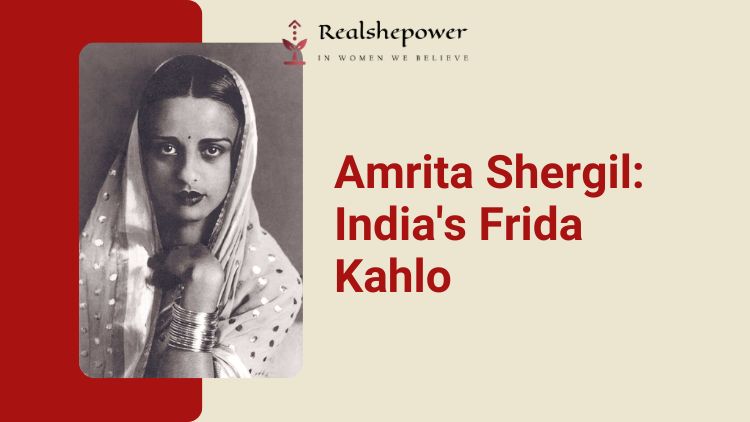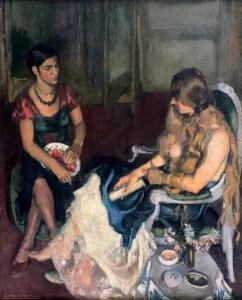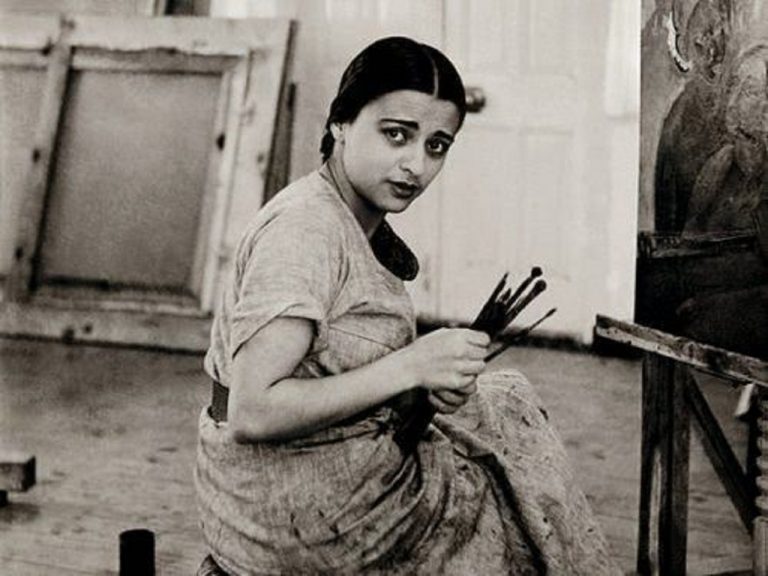Revolutionary, Unorthodox, Compelling Artist: Amrita Shergil, Famously Referred to as the Indian Frida Kahlo


Table of Contents
“Art is therapy. Artists are healers.”
Artists are free birds. The way they see things are entirely different from others. They find beauty in the most unusual places. I always thought the biggest artist is God who has made this fantastic and beautiful world for us. He may have created artists to spread his work.
Artists are blessed with the talent of interpretation of life in so many amazing styles that it becomes beauty in itself. They swim in a shinning and sparkling sea of imagination. The work of an artist is an open window to their soul. Each piece of art an artist portrays will be a part of his soul. They are too passionate and emotional. Artists are people who don’t care who is impressed, how good their work is, they just follow their heart and their work speaks for them.
One artist who has left an incredible and indelible mark on the history of contemporary Indian art is Amrita Shergil. She is the kind of artist who is beyond comparison and one of the most talented artists to have graced Indian soil.
The Childhood of this Rebellion Painter
She was the elder daughter to a Sikh aristocrat from Punjab, Umrao Singh Sher-Gil Majithia, and Hungarian – Jewish opera singer Marie Antionette Gottesmann. Born on Jan 30, 1913, in Budapest she displayed exceptional talent in painting from a young age. The Sher-Gil family lived an unconventional life filled with the artistic endeavor and intellectual inquiry as well as great political connection and shimmering diplomacy. World War I prevented the family from returning to India. In 1921, she visited India for the first time, she was eight. Her family shifted to Shimla where her father had an estate. The scenic beauty of the surrounding dales and hills made an everlasting impression on her aesthetic sensibilities.
The Elevation of this Innovative Painter

Even though she started to paint from the young age of five, her training started by the time she was eight. Not just painting, she showed her excellence in playing the piano and violin. But her passion for painting was recognized by her parent and teachers. Accompanied by her mother she went to the home city of the Renaissance, Florence, Italy. There she was enrolled in the art school of Santa Aununciata. However, her rebellion streak and her temperament didn’t suit the strict discipline, religious routines, and rigid curriculum so she returned to India just after finishing her one semester in the school.
The fire and passion for painting inside her had already been aroused. She at the age of 16, moved to Paris which was considered as the hub of modern art. At Grande Chaumiere she got training under Pierre Vaillant and Lucien Simon and she also received her formal training from École des Beaux-Arts. Her paintings reflected the strong influence of the Western mode of painting, where she loved the bohemian life of an artist in Paris. In 1933, she completed her famous creation ‘Young Girls’ which gained her wide recognition and appreciation. She was elected an Associate of the Grand Salon in Paris, the only Asian to be honored thus.
Europe belongs to Picasso, Matisse and Braque, and many others. India belongs only to me.
Amrita Shergill
Back to India to rediscover her style
Despite honored by such a prestigious recognition, Amrita longed to come back to India where she felt it held the key to her future career. She was not the one who used false modesty, she had declared, ‘Europe belongs to Picasso, Matisse and Braque, and many others. India belongs only to me.’ By 1934, she returned to India with a new outlook for India; the eyes of an artist. She was fascinated and impressed by the colors, the vibrancy, the textures, and the earthiness of the people.
Once in India, she began her never-ending journey of trying to decode the traditions of Indian Art. She traveled deeper into the lives of villagers, the dense perpetual sunlight, the bodies turned dark and the colors become brighter and southern part of India. She developed a style that was inspired by the bold shapes of European modernism as well as the Mughal miniatures and the Ajanta paintings. Her techniques and style underwent a radical change.
She learned to incorporate Indian traditions in her works, and thus she rediscovered her purpose and style of painting. Her paintings like Bride’s Toilet, Brahmacharis, and South Indian Villagers Going to Market reveals her passionate sense of color and an equal sense of empathy for underprivileged and poor villagers. According to her, she had found her ‘artistic mission’ which was to express the life of Indian people through her canvas.
Many of her painting like the Siesta’, ‘Village Scene’ and ‘In the Ladies’ Enclosure’, captured the poor state of the women in our country. Post marriage to Dr. Victor Egan, she entered a new phase in her creative experiences. Many of her works showed the influence of Rabindranath Tagore and Abanindrananth Tagore.
Her Vibrant, Fearless Personality and her Unexpected Death

She had found her ‘artistic mission’ which was to express the life of Indian people through her canvas. Many of her painting like the Siesta’, ‘Village Scene’ and ‘In the Ladies’ Enclosure’, captured the poor state of the women in our country.
On 3rd Dec 1941, she died at the young age of 28, though the reasons for her death were never ascertained. Her works remains a landmark in the history of Indian painting. Even though her paintings were critically appreciated but they were largely unsold while she was alive. Later on, her painting fetched an impressive amount of money, making her one of the priciest Indian women painters of all-time. She was a carefree lady and she led her life to her fullest.
Her works have been declared as National Art Treasures, by the Government of India. She is often considered as the pioneer of modern Indian art. Her life has been an inspiration to many. She lived in the pre-colonial era where women didn’t hold much status, but she left behind a saga of fearlessness and boldness. She would always remain one of the most impressive as well as the most gifted Indian artist.
About the Author

